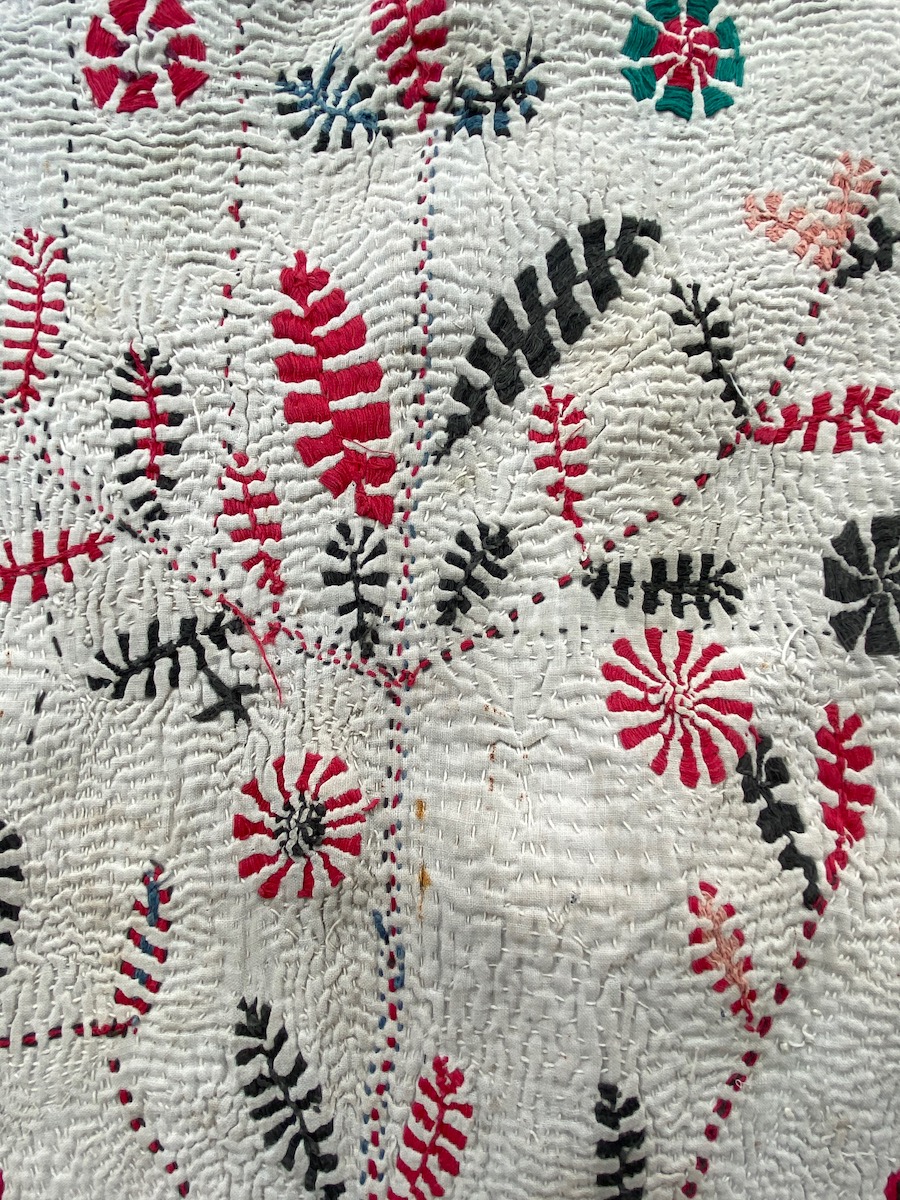Kantha quilt from Bangladesh
120,00€ incl. VAT
Traditionally Bengali woman of all castes and religions practiced kantha making. It is a unique textile medium that countless generations of woman in Bengal have used to express their innermost thoughts and beliefs. The etymology ot the world „Kantha“ is a bit confusing. The Hindi definition identifies it as „rags and patches“ and as a covering worn by jogis and faquirs. People who lived often only with one piece of cloth, served as clothing, bedding and shawl. First of all the Kantha is for domestiv and personal use, made from old pieces of cloth and recycled threads. But Kantha making was always also a kind of ritual, where every stich becomes a prayer and each motif means something.
The construction of the quilt is made by a simple running stitch that secures the layers of rags. The traditional white bengali sari made from unbleached cotton or silk was preferred. Decorative patterns are first traced onto a fabric panel. A variety of stitches – darning stitch, satin stitch, loop stitch and stem/split stitches – are then applied to render the geometric designs. The kantha symbols are a mixture of religious, ancient and everyday motifs of the modern life, indicative for indian culture, where ancient and contemporary society are seamlessly integrated. One of the most improtant sujets is the Tree of life, a favorite motive for a lot of indian textiles. The fertility of nature is one of the main aspects, the universe and the celebration of a never-ending life with the fertility of nature, it cycles of life, death and regeneration. The tree is a metaphir for physical as well as spiritual life.
These small Kanthas were give as a present to a newbor child, charged full with love. The old layers of textiles are able to protect the child from all evils and the embroideries gives the child strength due to the creative energy. Next to the tree of life with his striped leaves, flowers in full bloom with roundel-like flowers or betel leafs as an auspicious symbol realated to fertility.
Size: 0,59 x 0,40 cm
second half 20th century










